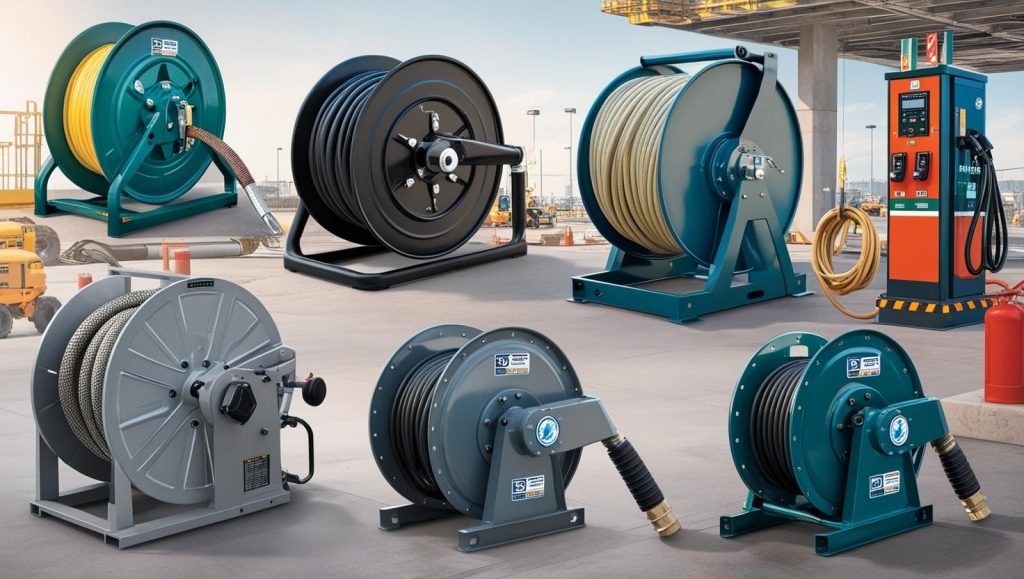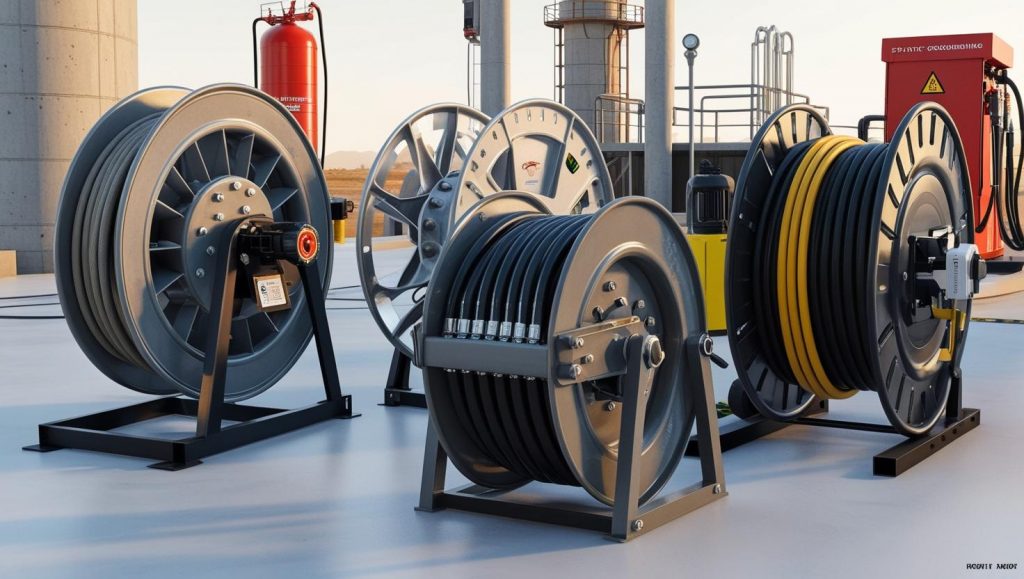Industrial reels, though often overlooked, play a fundamental role in the daily operations of various industries. These devices are designed to store, wind, and unwind hoses, cables, and wires, ensuring proper handling, minimizing damage, and reducing workplace clutter. From managing high-pressure hydraulic hoses in mining operations to organizing power cables in automated manufacturing lines, reels are essential for improving efficiency, safety, and maintenance. As industries adopt higher standards for operational reliability and safety compliance, the importance of robust, high-capacity reels continues to grow, turning them into indispensable components across supply chains and industrial facilities.
Market Size and Growth Trends
Industrial Reels Market size worth $0.62 billion by 2030, expanding at a compound annual growth rate (CAGR) of over 4.4%. This growth is underpinned by several structural factors, including the rise in construction projects, smart factories, urban development, and the widespread electrification of industries. Moreover, technological advancements in reel design, such as lightweight materials, corrosion-resistant coatings, and intelligent retractable mechanisms, are broadening their applicability and increasing their value proposition in both traditional and emerging sectors.

Key Drivers Fueling Market Expansion
1. Infrastructure and Utility Projects
As global economies rebuild and expand their infrastructure, the demand for electrical, plumbing, and fiber-optic installations is surging. These projects often require extensive cable and hose routing solutions that must be reliable, durable, and space-efficient. Industrial reels provide organized deployment and retraction, reducing installation times and equipment wear. In power distribution, reels are used for high-voltage cable storage, allowing for controlled spooling and unspooling in field operations—vital for safety and operational continuity.
2. Growth in Oil & Gas and Mining Sectors
In oil & gas and mining, operations are often conducted in remote, hazardous, and environmentally demanding settings. Here, reels serve as essential tools for managing everything from fuel hoses and welding cables to communication and safety lines. The ability to quickly deploy and retract lines without entanglement or damage ensures safety and reduces downtime. As global energy exploration intensifies and mining shifts to deeper and more complex sites, the requirement for ruggedized, corrosion-resistant reels becomes increasingly crucial.
Download PDF Brochure @
https://www.marketsandmarkets.com/pdfdownloadNew.asp?id=147119506
3. Emphasis on Workplace Safety and Efficiency
Workplace safety regulations across industries now emphasize trip hazard reduction, equipment protection, and ergonomic handling. Industrial reels help address these concerns by preventing hoses and cables from lying loosely on floors, which can cause accidents or lead to premature equipment failure. Spring-driven and motorized reels enhance these benefits by providing automated cable retraction, reducing physical strain on workers and supporting consistent and safe operations in fast-paced environments like assembly lines and repair bays.
Market Segmentation Overview
By Product Type
-
Cable Reels: Widely used in industries for electrical power distribution, telecommunications, and fiber optics. These reels enable controlled handling of cables, crucial in environments where continuous movement and connection are required.
-
Hose Reels: Common in fire safety, automotive repair, and hydraulic systems, hose reels help manage the flow and pressure of fluids while maintaining hose integrity.
-
Welding Reels: Specifically designed to handle welding cable loads and withstand high temperatures and electrical loads, offering both safety and convenience in industrial welding tasks.
By Drive Type
-
Manual Reels: These cost-effective solutions are preferred in applications with minimal hose/cable movement and are easy to install.
-
Spring-Driven Reels: Popular in medium-duty applications, they automatically retract hoses and cables, reducing effort and increasing safety.
-
Motorized Reels: Used in heavy-duty and high-volume environments, these reels can handle large cable diameters and long lengths with the help of electric, hydraulic, or pneumatic motors, ideal for mining, defense, and offshore platforms.

By End-Use Industry
Reels find applications across a wide range of industries:
-
Construction: For powering heavy machinery and managing utilities at large job sites.
-
Oil & Gas: Used in offshore rigs and land-based extraction for managing fuel, water, and safety hoses.
-
Utilities & Power Distribution: For transporting cables used in electrical grid maintenance and repair.
-
Manufacturing: Integrated into smart factories for automation and machine tool systems.
-
Transportation & Logistics: Used in loading docks, vehicle maintenance, and fleet operations.
-
Firefighting & Emergency Services: Hose reels allow quick deployment in critical emergency scenarios.
Regional Market Insights
North America
In North America, the market is driven by aging infrastructure that requires constant maintenance, a strong oil & gas presence, and increasing investment in smart grids and manufacturing automation. Strict OSHA safety regulations also drive reel adoption in workplaces.
Asia-Pacific
This region shows the fastest growth due to rapid urbanization, government-led infrastructure initiatives, and rising foreign investment in manufacturing. Countries like China, India, and South Korea are spearheading industrialization, leading to large-scale demand for industrial-grade reels.
Europe
Europe maintains a stable and mature market, with demand stemming from renewable energy expansion, automotive manufacturing, and stringent environmental standards. Sustainable reel designs and integration with Industry 4.0 frameworks are prominent trends in this region.
Challenges in the Industrial Reels Market
While the outlook remains strong, the market does face several constraints. Volatility in raw material prices, particularly steel and aluminum, can significantly affect production costs and profit margins. Additionally, product standardization is lacking, which complicates integration with global supply chains and machinery. Furthermore, the presence of low-cost and non-compliant reels in emerging markets can lead to safety issues and increase competition for established players. Addressing these concerns will require supply chain optimization, quality assurance measures, and customer education.
Future Outlook: Innovation and Automation
The future of industrial reels is tied to technological evolution. Manufacturers are now integrating smart sensors and IoT connectivity to allow real-time monitoring of cable or hose usage, tension, and maintenance needs. AI-driven retraction systems, lightweight composite materials, and electrically isolated reels are being introduced to improve performance and safety. As industries transition to predictive maintenance and remote operations, industrial reels will evolve into intelligent cable management systems that actively contribute to system diagnostics and automation.
Conclusion: Unwinding Market Potential
Industrial reels have become more than storage solutions—they are essential tools that enhance operational safety, streamline workflows, and extend the life of critical components. As industrial sectors continue to scale up and adopt new technologies, the demand for advanced reel systems will grow. With innovation in materials, design, and smart features, the industrial reels market size is expected to expand robustly, offering manufacturers and end-users new opportunities for efficiency and productivity.
